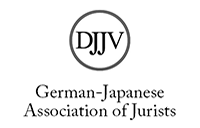Kollektiv erschwerter Zugang zur Universität – kollektiv erleichterter Zugang zum Gericht
Die erste Entscheidung über eine Verbrauchergruppenklage
Abstract
On 6 March 2020, the District Court of Tōkyō handed down its decision in a widely reported case concerning rigged entry exams at the university Tōkyō Ika Daigaku (東京医科大学, also known as Tokyo Medical University). The case had drawn attention because it highlighted an instance of systematic discrimination against women. At the entrance exams in question, points were deducted from the scores of female candidates, lowering their chance of receiving an offer from said university. The proceedings also attracted attention for being the first based on a new instrument for collective redress in consumer cases. This instrument had been introduced by a statute in 2013 that became effective on 1 October 2016. It aimed to facilitate access to justice for consumers, especially in cases of wide-spread harm, and to reduce the market distortions resulting from inadequate remedies. The new proceedings allow consumer protection organizations to seek a declaratory judgement, on the basis of which they may then claim compensation on behalf of the affected consumers.
The article outlines the new instrument and its application in practice. It then summarizes the decision by the District Court of 6 March 2020 with a focus on the five contentious issues. Three of those (commonality, plurality and controllability) concern new conditions of admissibility, unique to the new instrument. In its declaratory judgment, the court held that the university had committed an unlawful act by manipulating exams scores without disclosing this selection procedure and is therefore liable to compensate those (mostly female) candidates that applied in 2017 and 2018 without receiving an offer; they may recover their application fees, the fees due to the consumer organization in the collective redress proceedings as well as damages for delay. The court rejected the claim for travel expenses, though. The court has also made some initial clarifications with regard to the new conditions of admissibility.
The author compares the Japanese instrument for collective redress with the recently introduced German one. She identifies several commonalities, including its two-step structure, with a declaratory judgement on the first stage, as well as the fact that proceedings are initiated and carried out (at least on the first stage) by certain consumer organizations. She also observes that the legislative process in both countries was characterized by similar concerns about a so-called “litigation industry”. The concerns had an impact on the effectiveness of the instruments. As an example for a difference, the author points to the second stage, with a group proceeding conducted by the consumer organization in the Japanese case and individual claims brought by the consumers themselves in the German case. Among other things, she also discusses financial aspects, concerning both the financing of consumer organizations in general and the funding of the individual proceedings.
The author concludes that the expectations that accompanied the introduction of the new collective redress proceedings have so far only been realized to a limited extent. Although the consumers concerned in the first case have now received a helpful declaratory judgment on the basis of which they can file their claims for the second stage of the procedure, the limitations inherent in the instrument have also become apparent. In particular, its limited scope led to the exclusion of travel expenses, even though these costs may, in many cases, have been the largest head of damages.
Practical problems for consumer organizations relating to their funding and strict requirements concerning their registration further reduce the effectiveness of the new instrument, as is evidenced by the low number of cases and registered organizations eligible to initiate proceedings.
Nevertheless, the first set of proceedings that has led to a judgment also reveals a potentially underappreciated dimension of the instrument which might ultimately be even more important than the aims commonly pursued with collective redress instruments in civil proceedings, at least in certain cases: the opportunity to highlight societal challenges through court proceedings.






